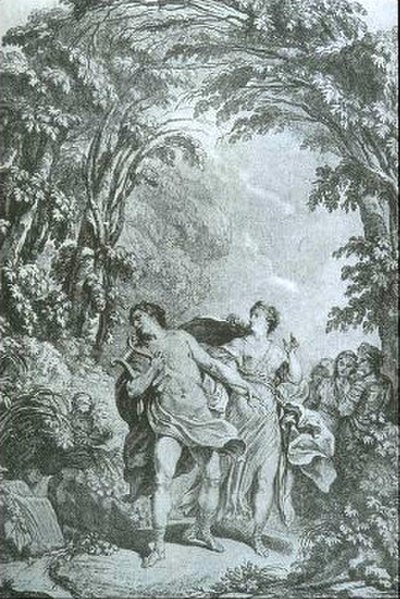Opera seria is an Italian musical term which refers to the noble and "serious" style of Italian opera that predominated in Europe from the 1710s to about 1770. The term itself was rarely used at the time and only attained common usage once opera seria was becoming unfashionable and beginning to be viewed as something of a historical genre. The popular rival to opera seria was opera buffa, the 'comic' opera that took its cue from the improvisatory commedia dell'arte.
Caricature of a performance of Handel's Flavio, featuring three of the best-known opera seria singers of their day: Senesino on the left, diva Francesca Cuzzoni in the centre, and art-loving castrato Gaetano Berenstadt on the right
Jacopo Amigoni: Il cantante Farinelli con amici (among which Metastasio), c. 1752 (National Gallery of Victoria, Melbourne)
Illustration from a 1764 edition of the score of Gluck's Orfeo ed Euridice
Anton Raaff, the German tenor who created the title role in Mozart's Idomeneo, seen here performing a heroic role, c. 1780
Italian opera is both the art of opera in Italy and opera in the Italian language. Opera was in Italy around the year 1600 and Italian opera has continued to play a dominant role in the history of the form until the present day. Many famous operas in Italian were written by foreign composers, including Handel, Gluck and Mozart. Works by native Italian composers of the 19th and early 20th centuries, such as Rossini, Bellini, Donizetti, Verdi and Puccini, are amongst the most famous operas ever written and today are performed in opera houses across the world.
Interior of La Fenice opera house in Venice in 1837. Venice was, along with Florence and Rome, one of the cradles of Italian opera.
Jacopo Peri as Arion in La pellegrina
Claudio Monteverdi by Bernardo Strozzi, c. 1630
Władysław's Opera Hall Building (right) at the Royal Castle in Warsaw








